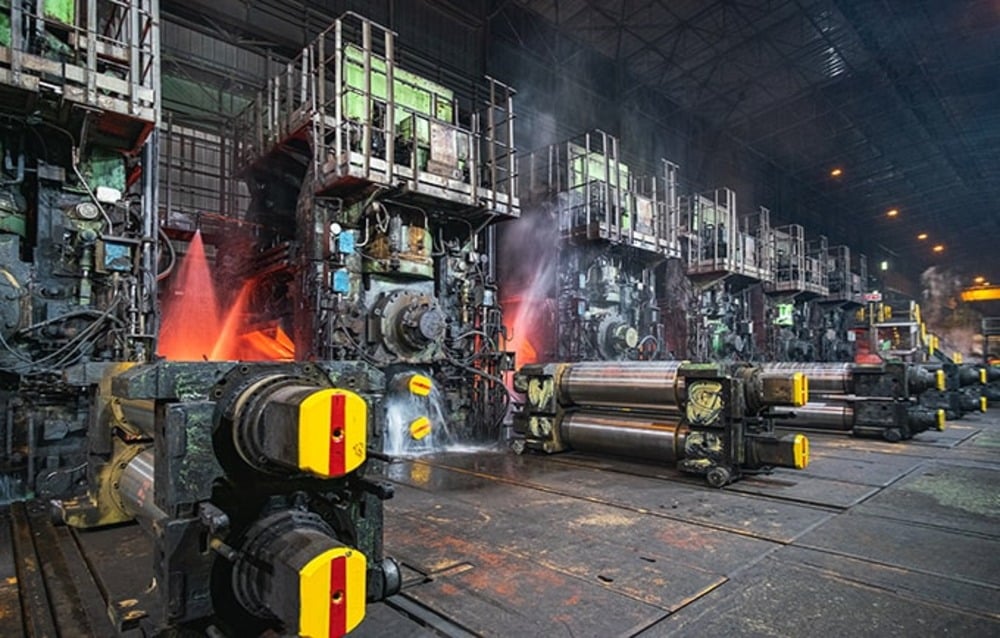
An infrared pyrometer is essential for non-contact temperature measurement, especially in high-temperature industrial environments. Detecting the thermal radiation emitted by an object delivers accurate readings without direct contact, making it ideal for sensitive or hazardous surfaces.
With industries advancing towards automation and precision, the demand for infrared pyrometers has significantly increased. Their relevance is particularly noticeable in metal processing, glass manufacturing, and defense sectors.
What is an Infrared Pyrometer?
An infrared pyrometer is a device that measures temperature based on the infrared radiation emitted by an object. Unlike contact-based thermometers, this instrument can gauge heat from a distance, making it safe and efficient for extreme conditions.
These pyrometers are widely used when traditional thermometers might fail or become damaged due to high heat, moving parts, or inaccessible surfaces. They provide real-time data critical for process control.
The functionality of an infrared pyrometer is based on the Stefan-Boltzmann law, which relates the temperature of an object to the intensity of its emitted radiation. This scientific principle ensures high accuracy across a variety of materials and applications.
Components of Infrared Pyrometer
An infrared pyrometer consists of several key components that enable its precise temperature measurement capabilities:
Optical System: Captures the infrared radiation emitted by the target object. It uses lenses or mirrors to focus the radiation onto a detector.
Receiver: Converts the collected radiation into an electrical signal. This is often a photodetector or thermopile that responds to infrared energy.
Display/Recorder: Processes the signal and presents the temperature reading. It may also store the data for later analysis or transmit it to a control system.

Operating Principle of an Infrared Pyrometer
The working of an infrared pyrometer follows a series of steps based on fundamental thermodynamic principles:
Detection of Infrared Radiation: The pyrometer detects radiation in the infrared spectrum emitted by the target object.
Focusing by Optical System: Lenses or mirrors collect and focus this radiation onto the detector.
Signal Conversion: The detector converts the focused radiation into an electrical signal proportional to the intensity of radiation.
Signal Processing: This signal is amplified and filtered to eliminate noise and improve accuracy.
Temperature Calculation: Using calibration and emission coefficient settings, the pyrometer calculates the corresponding temperature.
Display or Reflection of Final Temperature to Operator: Ultimately the calculated final temperature is displayed & its corresponding Analogue or Digital Outputs are transmitted.
Applications of an Infrared Pyrometer
Infrared pyrometers are indispensable in several industrial domains due to their robustness and reliability:
Glass Manufacturing
Monitoring the surface and internal temperatures of glass is crucial to ensure quality. The challenge is high-temperature exposure and radiant heat. Solution: Infrared pyrometers offer non-contact monitoring, while maintaining accuracy.
Plastic Industries
Plastic processing involves temperature-sensitive operations like extrusion and moulding. The challenge is rapid heating and cooling. Solution: Pyrometers provide real-time data that help maintain the optimal temperature range.
Rolling Mills
In metal rolling mills, metal sheets or slabs are processed at extremely high temperatures. The issue is moving parts and radiant heat. Solution: Pyrometers allow accurate temperature checks without halting production or risking worker safety.

Steel Manufacturing
Steelmaking involves molten materials that can’t be measured with contact devices. The challenge is avoiding contact with corrosive or molten surfaces, even with contact-based temperature measurement. A potential risk to the safety and well-being of dedicated personnel persists. Solution: Infrared pyrometers measure from a distance with high accuracy and durability.
Safety & Critical Asset Monitoring
With industries like Steel Plant or Bulk Material Handling, the threat of fire outbreaks—especially along conveyor belts or in storage zones—is a persistent concern. Solution: Using 24X7 thermal monitoring systems like pyrometers can be a useful solution to counter such threats.
In Switch Yards, heavy KVA transformers and its associated bushings & current collectors & for Metal or Glass Industries various furnaces are considered as critical assets. These assets are prone to abnormal heat buildup, which can lead to structural fatigue, rupture or cracks in their outer shells, making them unsuitable for further use.
Solution: A dedicated Pyrometer can be deployed for 24 X 7 monitoring of Critical asset’s outer shell monitoring. They might be programmed to trigger alarm whenever an abnormal temperature rise is happening. This proactive approach not only enhances safety but also protects assets worth crores, ensuring uninterrupted operations and peace of mind of the concerned firms.
Pharma Industry
Maintaining a sterile and precisely controlled environment is vital. Challenges include ensuring uniformity in batch processes. Solution: Infrared pyrometers provide consistent temperature monitoring in non-contact modes, which is ideal for pharmaceutical applications.
Defence and Electronics
In defence, heat management in missiles and other equipment is vital. In electronics, thermal stress monitoring is key. Solution: Industrial pyrometers ensure thermal consistency and prevent overheating in critical systems.
Conclusion
Infrared pyrometers are vital in modern industry due to their ability to provide non-contact, accurate, and rapid temperature readings in harsh environments. Whether in glass manufacturing or defence applications, they deliver unmatched performance and safety.
Manglam Electricals offers a premium range of pyrometer thermometer systems, including radiation and digital variants. Their infrared pyrometers are tailored for industrial use, combining precision, durability, and ease of integration to meet the demands of today’s automated systems.

Leave a Reply